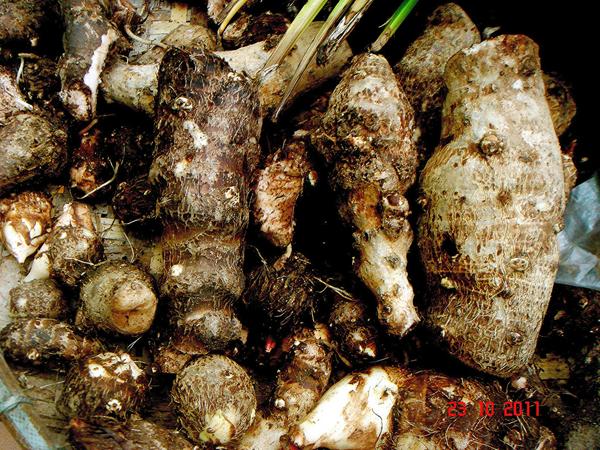Many Filipinos find swine raising lucrative among other livestock ventures. Aside from providing raisers with additional income, investment return also happens in a short span of time.
In 1995, backyard raisers, which make up the majority of our local swine industry, contributed 90% of the total P75 billion income from swine production.

Problems in production, disease control, marketing system, and import policies hamper the development of the swine industry. The most pressing problem is the high cost of feeds. With corn and soybean as the main ingredient in swine feeds, a staggering 70% of the total production cost goes into feeds alone. Our local raisers, therefore, need to find an alternative feed ingredient that is cheap and locally available.
Sakwa, the cheaper alternative to corn
Last year, researchers from the Farming Systems and Soil Resources Institute (FSSRI) and the Institute of Animal Science (IAS) in UP Los Baños started a project that aims to replace corn with sakwa in swine feed. Entitled “Technology development for the utilization of Sakwa (Yautia sp.) as replacement of corn in swine grower and fattener rations,” the project was conducted with the aid of farmers in Pinagdanglayan, Dolores, Quezon. The Bureau of Agricultural Research funded the study. In June 2001, the researchers concluded the study with encouraging results.
Sakwa is a by-product and the main corm (a short swollen underground stem base in some plants) of Gabing San Fernando – a tuber that thrives abundantly in plateaus and cogon-planted areas. The use of sakwa as swine feed is actually popular among farmers. Previous studies have shown that Gabing San Fernando is resistant to common pests and diseases, adverse climatic conditions and drought, and ranks second to sweet potato in terms of nutritive value and digestibility. Further tests by the IAS showed that dried sakwa contained 7.67% protein – a figure comparable to the 8.5% protein content of corn. However, researchers saw the need to further develop this technology since there are no literature on the feeding value of sakwa at present.
The researchers measured the performance of swine fatteners with varying levels of sakwa replacement of the corn component in the swine grower and fattener ration in both on-farm and on-station trials. Remarkably, sakwa-based rations were found to be more profitable than commercial feeds. Farmers using sakwa-based feeds incurred a net benefit of P740 per head of swine compared to only P320/head for commercial-feed treated swine. The cheaper cost of the sakwa feed, as compared to corn, brought about the savings.
Results also showed that when farmers replaced 60% and 90% of the swine grower and finisher diet, respectively with sakwa, the animal performed as well as those nourished with commercial corn-based feeds. However, the carcass yield and tenderness of meat decreased when corn was replaced entirely (100%) by sakwa. Nonetheless, the meat remained juicy, with good color and flavor quality.
These are the recommended steps for the proper preparation of sakwa as swine feed ingredient:
1. Wash the sakwa properly, making sure that no soil particles are left as this may affect its quality as feed.
2. Chop the sakwa into thin, round pieces or more preferably thin strips. The latter will be more appropriate to avoid the chopped pieces from clumping together, thus hastening the drying process.
3. Dry the sakwa either by air-drying or with the use of a dryer to 14% moisture content. This can be done by air-drying for five days, or sun-drying for three days.
4. Mill the dried sakwa well using the “hammer mill.”
5. Mix the milled sakwa according to the recommended ration – 60% for swine grower ratio, and 90% for the swine fattening ration.
6. Store the mixed feed in a dry place.
—————————-
This study won the AFMA Best R&D Paper Unpublished Category for Animal Science during the 13th National Research Symposium last 2 October 2001. For more information, please contact FSSRI, College of Agriculture, UPLB, College, Laguna, Tel.no. (049)5363229
By: Thea Kristina M. Pabuayon, BAR Chronicle, September 2001 Issue (Vol. 2 No. 17-18)

